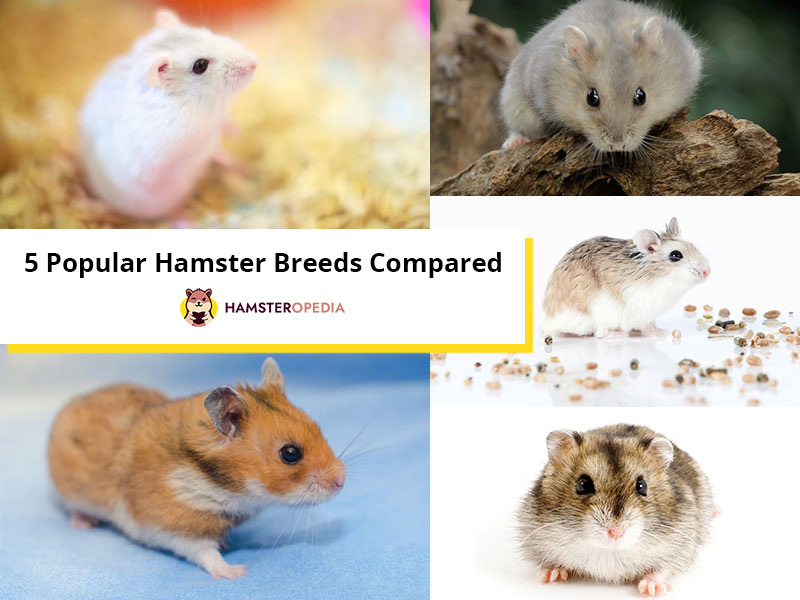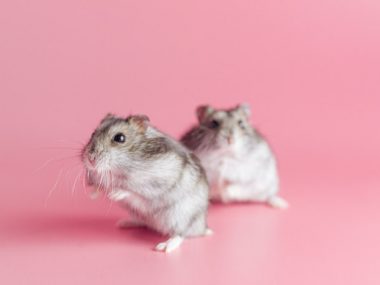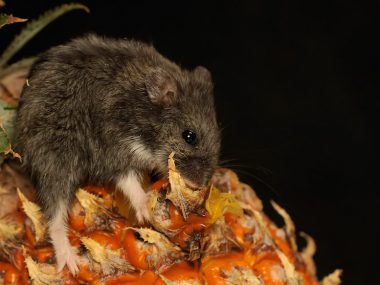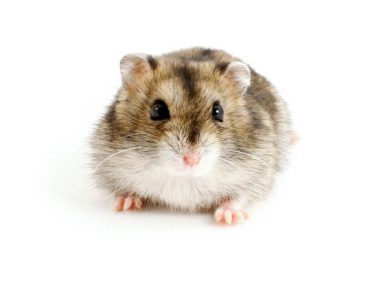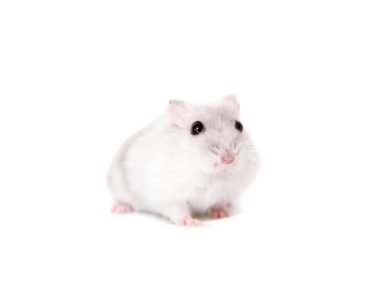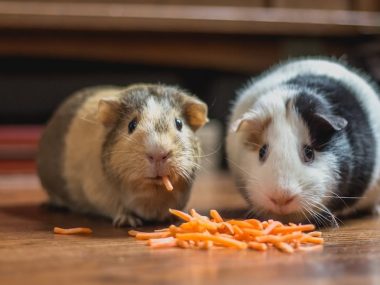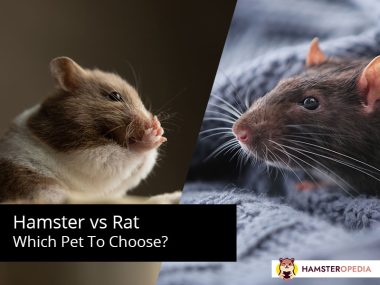There are over 20 known species of hamsters but only five breeds are popular as pets. Wild hamsters live as solitary animals and are somehow aggressive, features that make them unsuitable as pets. So what are some of the popular hamster breeds you can keep as pets?
Here are five popular hamster breeds:
- Syrian Hamster
- Campbell’s Russian Hamster
- Winter White Hamster
- Robrovskii’s Hamster
- Chinese Hamster
Let’s compare the five popular hamster breeds commonly kept as pets based on factors such as appearance, diet and temperament.
Table of Contents
1. Syrian Hamsters

Syrian hamsters, also known as teddy bear or golden hamsters, are among the most popular and cutest hamster breeds in the world. Syrian hamsters are also known for their calm temperament, a feature that makes them the best hamster for beginners.
Though Syrian hamsters are calm and can bond quickly with their human owners, they aren’t known for getting along with their fellow hamsters. Syrian hamsters are also crepuscular, meaning they rest for the better part of the day and come to life during twilight.
Origins
Syrian hamsters are native to Syria. They were acknowledged as a species in 1839 by George Robert Waterhouse, a British zoologist. The first hamster discovered by Waterhouse was a female he named “golden hamster.” The skin of the first golden hamster is (blargh) on display at London’s Natural History Museum.
Later in 1930, zoologist Isreal Aharoni captured a female hamster and her litter. The hamsters were then bred in his laboratory at the Hebrew University of Jerusalem. So many escaped that many Syrian hamsters to this day are believed to be descendants of Aharoni’s hamsters.
Physical Appearance
Adult Syrian hamsters reach about 6 inches (15.24 cm) in length and 7.9 ounces (224 grams) in weight. They are typically golden (hence their nickname) with white bellies. Some variations include white bodies with golden heads or completely white bodies.
As “Lab Rats”
Syrian hamsters were used in experiments to study human conditions, including:
- Cardiovascular diseases
- Non-cancer respiratory diseases
- Metabolic diseases
- Infectious diseases
As Pets
The American Society for the Prevention of Cruelty to Animals recommends hamsters as pets for supervised children over the age of 6. Syrian hamsters are solitary creatures that should be housed alone. Their habitat should be at least 20 gallons (75.7 liters) in size, though the bigger, the better.
The hamster wheel, stereotypical as it has become, is an essential part of any hamster’s cage. It provides both entertainment and exercise, preventing your hamster from becoming stressed and eventually developing various illnesses.
2. Campbell’s Russian Hamsters
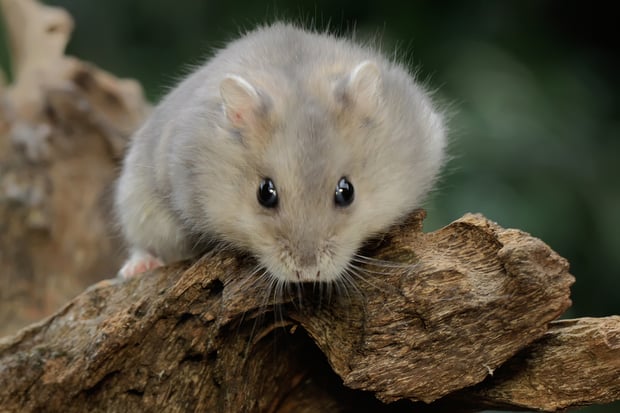
Although fun to own, Campbell’s Russian Hamsters can prove challenging to tame due to their fear of humans. And as a naturally shy breed, these hamsters need minimal handling. Instead, you can buy them many toys and running tubes and have fun observing them!
Physical Appearance
The Campbell’s Russian hamster is one of the most popular dwarf hamster breeds as they’re affordable and easily accessible in pet stores. On most occasions, the Campbell’s Russian hamster is confused with the Winter White hamster since the latter famously changes its coat color during the winter.
The size of the Campbell’s Russian depends on its location. For example, Wild Campbell’s Russian hamsters from Mongolia have an average body length of 3.1 inches (7.87 cm). However, while in captivity, they are longer due to the ready access to nutrients.
Diet
Campbell’s Russian hamsters are omnivores, meaning they eat both meat and plant life. Campbell’s Russian hamsters eat mostly plant life in the wild, but they can feed on earthworms and mealworms to meet their nutrition needs in captivity.
The Campbell Russian is easily the best hamster for allergies as it can a variety of foods, including the following:
- Boiled eggs
- Wheat
- Grain
- Locusts
- Sunflower seeds
- Cooked chicken
3. Winter White Hamsters
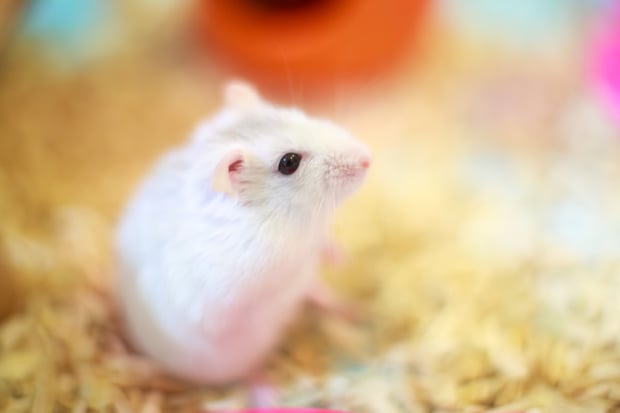
As pets, winter white hamsters are famously calm and easy to tame. They are also less aggressive toward other hamsters, though it still isn’t recommended to house them in pairs.
Winter white hamsters are popular as pets in North America, Japan, and Europe. Sadly, like all hamsters, the winter white is prone to tumors, hence the need to buy from reputable breeders as opposed to pet stores.
Other health problems in winter whites include:
- Broken teeth
- Dehydration
- Dental malocclusion (tooth misalignment)
- Diarrhea
- Ear problems
- Bite wounds (which can lead to infection)
- Constipation
Physical Appearance
Male winter whites’ bodyweight reaches a maximum of 45 grams (1.58 oz), while female winter whites can reach a maximum weight of 36 grams (1.27 oz). In captivity, they are naturally heavier, given their more sedentary lives.
Though the winter white and the Campbell’s dwarf hamster are often mistaken for each other, the winter white has a less fluffy coat than the Campbell. The winter white is typically colored sapphire, sapphire pearl, or normal pearl.
The winter white can also be colored marble, as well as other colorations. Such colors, however, only appear as a result of hybrid crossbreeding with the Campbell’s hamster. Hybrid colors include blue, argente, camel, brown, merle, umbrous, cream, mandarin, and yellow-blue fawn.
Hybrids
Out of the five breeds of hamsters kept as pets, the winter white and Campell’s dwarf hamsters are the only ones able to interbreed and produce offspring. Sadly, hybrid offspring from crossbreeding tend to develop health problems.
4. Chinese Hamster Breeds
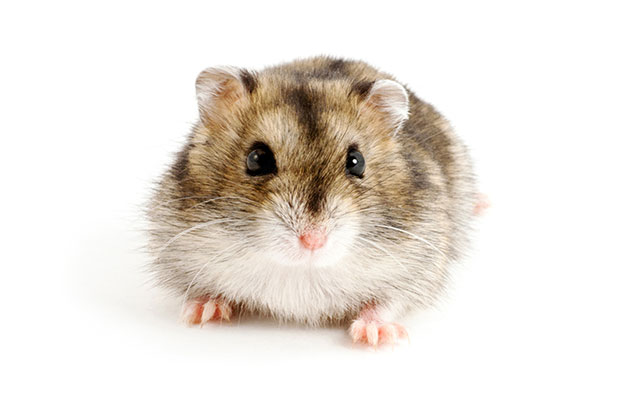
The last two breeds of hamsters both originate in China. They are known as the Chinese hamster and the Roborovskii’s hamster, a breed of dwarf hamster. Both hamsters are native to the deserts of China.
The Chinese Hamster
The Chinese hamster originated from China and Mongolia. Unlike other hamster breeds, they have long tails and are grayish-white with one dark stripe down their back, though there are spotted variations. The Chinese hamster is also nocturnal rather than crepuscular (like the crepuscular Syrian hamster), but they will occasionally remain active during the day.
The Original “Lab Rat”
Before scientists started using rabbits, mice, and rats, they used the Chinese hamster for lab experiments. The switch came when scientists realized that mice and rats were easier to breed and keep in large groups, whereas Chinese hamsters prefer to remain solitary.
Temperament
Due to their more docile nature, female Chinese hamsters were kept as pets while males were used solely for breeding. Chinese hamsters, in general, are nervous and will nip in the beginning, but once tamed, they are gentle and calm.
Due to their eventual sweetness, they can make great pets. However, some states in the USA require a permit to keep a Chinese hamster as a pet. States such as California and New Jersey regard the Chinese hamsters as an exotic animal and a pest.
5. Roborovskii’s Hamster
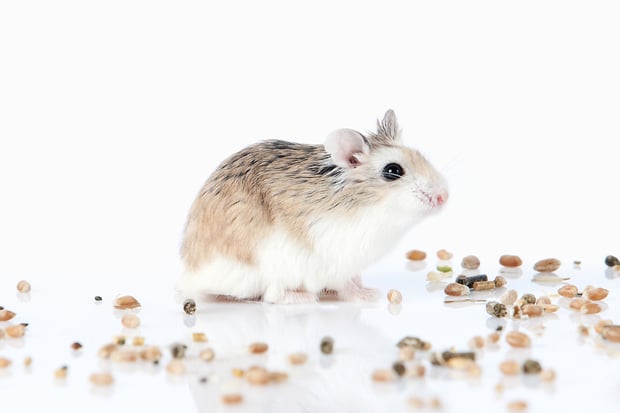
The Roborovskii’s hamster is a dwarf hamster, also known as the Robo dwarf hamster that lives in the deserts of Central Asia. They are typically found in the basin of Lake Zaysan in Kazakhstan and in Tuva, Mongolia, as well as Xinjiang, China.
Natural Habitat
These little hamsters live in burrows six feet underground and, like the Syrian hamster, are crepuscular in nature. But unlike the Syrian hamster (which is a herbivore), the Roborovskii hamster will eat meat and insects. In Mongolia, for instance, the Roborovskii hamster will eat beetles, crickets, and earwigs, as well as snails!
Physical Appearance
The Roborovskii hamster is the smallest breed of dwarf hamster. Its sandy-colored fur and dorsal stripe further distinguish it from the other dwarf breeds. Though Roborovski hamsters have become popular as pets, they are ideally best suited as observational pets. They don’t like being handled and are prone to high anxiety if handled too often.
Diet
Because Roborovskii’s hamsters are omnivores, they need protein alongside grains and seeds. Mealworms, crickets, and grasshoppers should be added to their regular diet. The insects can be fed alive or dried.
Here are some brands of dried mealworms you can feed your hamster (available on Amazon.com):
- Downtown Pet Supply Dried Mealworms. These mealworms by Downtown Pet Supply are high in protein and will provide great nutrients for your hamster. They are 100% natural, meaning no preservatives or additives and non-GMO.
- Wagner’s 58005 Mealworms. These come in a small bag with a velcro press-lock. The small amount makes it perfect for mixing with other insects as a lighter addition.
- TradeKing Dried Mealworms. This bag of dried mealworms comes in three different weights (1lb, 2lbs, and 3lbs) and is veterinary certified, “ensuring the highest quality” for your hamster.
There are also several treats you can give your hamster. But as simple as the Roborvskii’s hamster’s diet is, several foods are too dangerous for it to eat. These foods include:
- The green parts of a tomato
- Peppers
- Chocolate or candy in general
- Aubergine
- Citrus fruits
- Meats high in fat
- Apple seeds
- Onions
- Garlic
FAQs About the Different Hamster Breeds
How Many Hamster Breeds Are There?
There are five main hamster breeds, with each coming with unique characteristics. Syrian hamster breeds are the most popular and tend to thrive in solitude. Other types include Winter White, Campbell’s Russian, Chinese, and Robrovskii’s hamsters.
Which Type of Hamster Is the Friendliest?
The Campbell’s Russian Hamster is the hamster people choose when they want to keep more than one hamster. In terms of temperament, Campbell’s Russians are the opposite of Syrian hamsters as they are pleasant and friendly toward other hamsters.
What Is the Calmest Hamster Breed?
The winter white Hamster takes its name from the fact that its dark fur changes color and becomes white during the winter. The coat change doesn’t typically happen when winter whites are kept in captivity as indoor life prevents their bodies from recognizing shorter day lengths.
Conclusion
While the five types of hamsters have their similarities, they also come with their unique differences, including size, color, temperament, and markings.
Hopefully, by learning their differences, you’ll be well-placed to choose a breed that’ll best suit your preferences.
